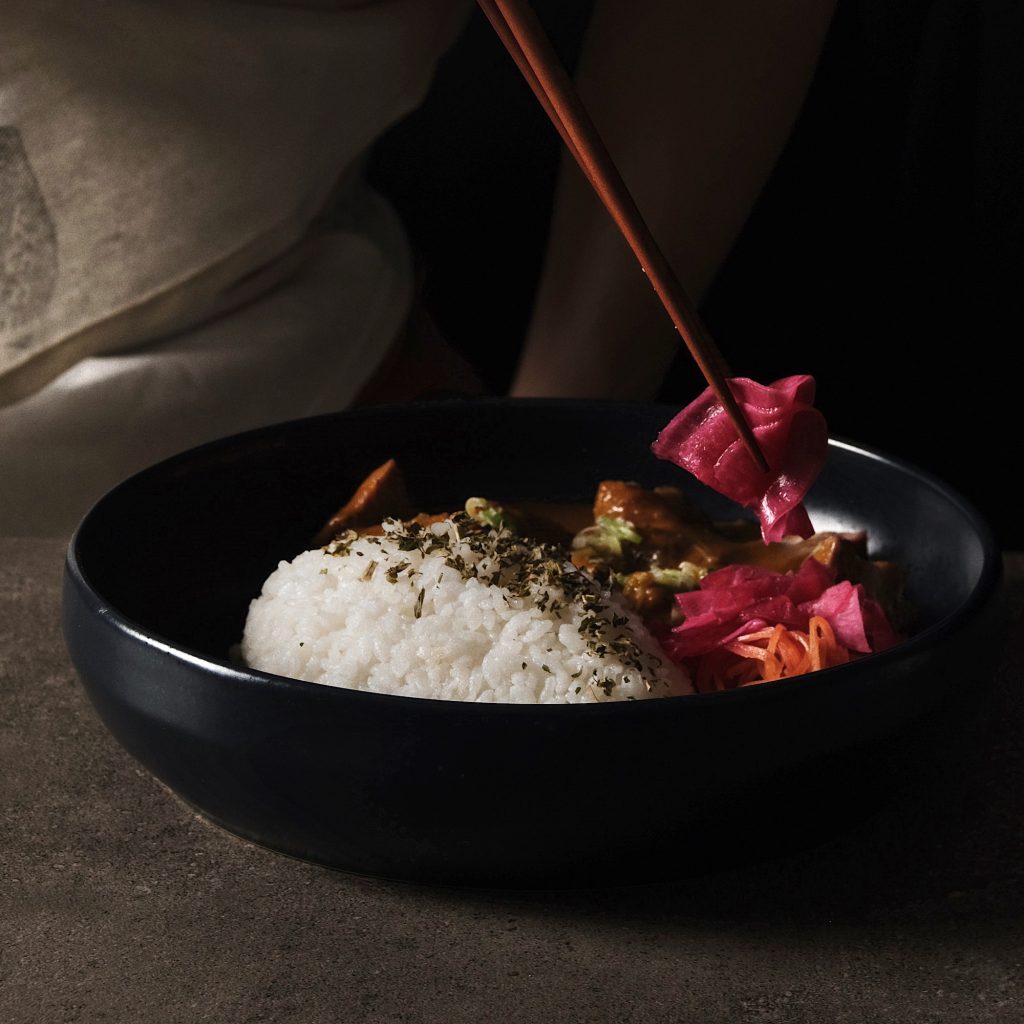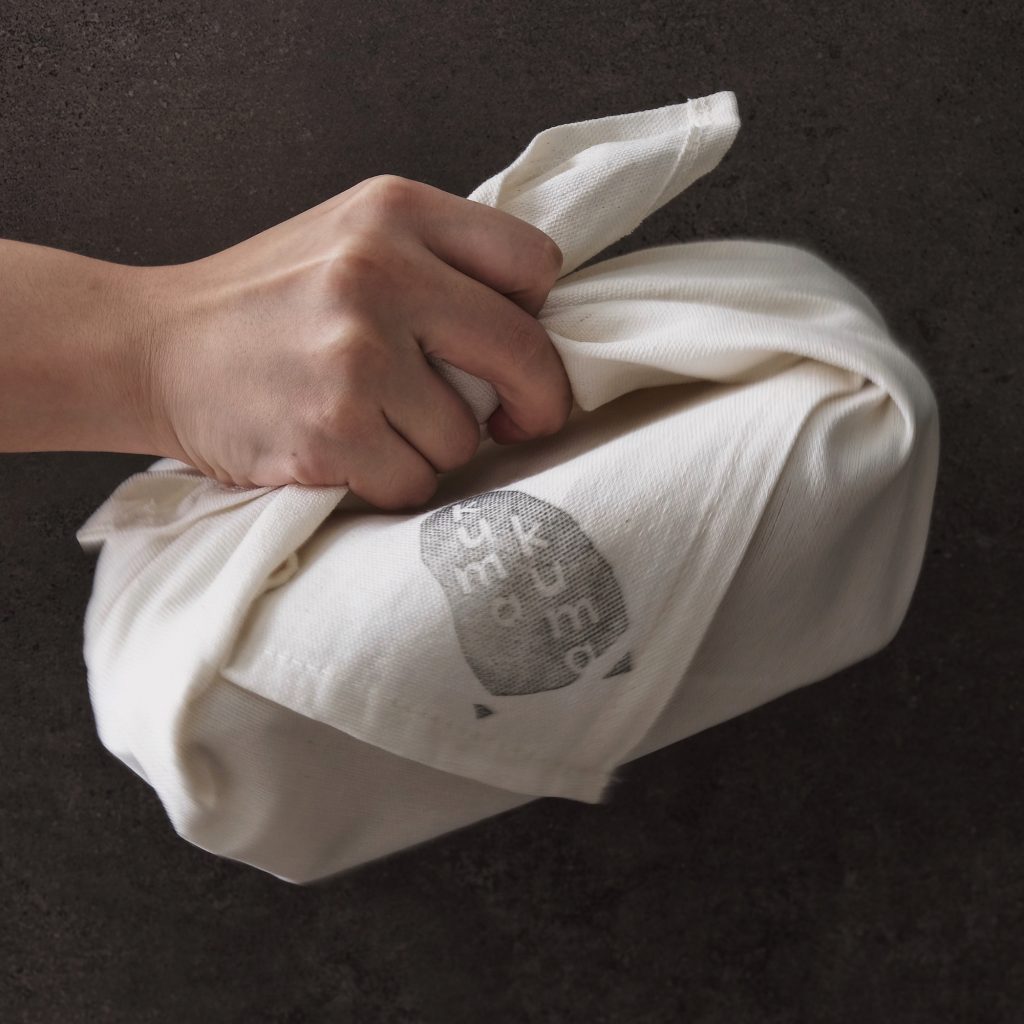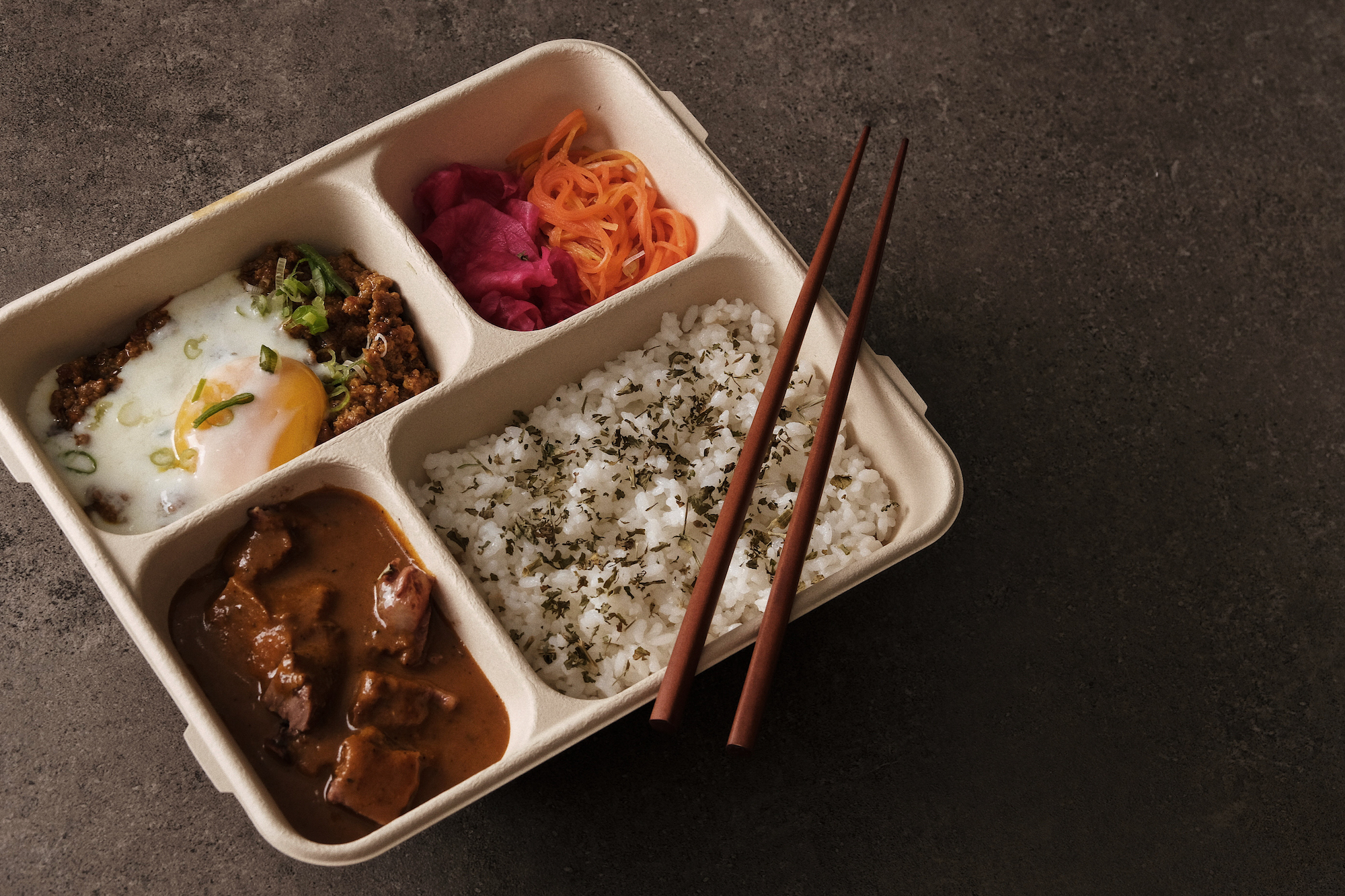On a Sunday, I meet a motorcycle rider in front of our gate. With him are three curry bento boxes carefully wrapped in canvas cloth. The package, which came from Kumakuma Curry, is still warm to the touch when it arrived. As I get a whiff of the curry’s aroma while unwrapping it, I think of how to wash my palate after the meal. I imagine the taste of cold house tea in my mouth. But there’s none at home. And with the spike of COVID-19 cases in recent days, dropping by the grocery just for tea is out of the question.
If not for the pandemic, these curries would have been served in a 20- to 30-seater restaurant. That was—and remains to be—the goal of the Kumakuma team when they first envisioned the business.
“By the time our chefs [Takumi Reyes and Erika Pangan] were set to commit themselves full-time to the curry business, the pandemic struck,” Nina Capistrano, one of the partners behind Kumakuma, writes in an email. Like other businesses, Kumakuma pivoted to an online delivery-only concept.
Setting up a food delivery business is the most practical way of doing business amid the lockdown. Not only does it take away the tedious task of implementing social distancing and sanitary measures as in a brick-and-mortar restaurant, there is also ease in connecting with customers.
“Digital commerce and social media have made the process of building and running a business more accessible [during lockdown]. An immediate and positive consequence of this was a shift in consumer mindset. What we found was a market in a disposition to try. There seemed to be an openness to the consumer—a craving, even—for something different,” Capistrano says.

This willingness of consumers to explore is what further pushed the Kumakuma team to launch the brand during lockdown. In a way, the current business landscape also allows them to test the market and fine-tune their products for future endeavors—a physical restaurant included.
Uplifting the dining experience
From the beginning, Kumakuma has always been intent on crafting a curry-centric menu. Borne out of Reyes’ liking for curry and his frequent travels to Japan (he even once worked at L’Effervescence in Tokyo), Kumakuma’s goal is to diversify the curry experience in Manila. If anything, as Capistrano says, their goal is to become the go-to for Japanese curry in the local food scene.
Kumakuma currently has three items on their menu: signature beef curry (a combination of short plate curry and dry beef curry), sous-vide beef curry, and butter chicken curry. These dishes can be ordered in bento boxes or trays for sharing.
“By dedicating ourselves to a single product category, we can focus exceedingly on quality. Though there are many concepts with lengthy menus or that offer wider variety, we deliberately chose to go the opposite route. We like to have a few things, and to do those few things well,” Capistrano says.
To further ensure that what they serve is prepared with utmost care, Kumakuma limits the number of orders they accept. When they launched in November 2020, they sent out an average of 20 to 30 bentos each delivery day. Their delivery schedule is also currently limited to Wednesdays, Fridays and Sundays. “It is not intended for quick service, and instead demands time and technique,” Capistrano says.
Curry is also an infallible choice for a delivery concept. Its flavor and quality aren’t prone to changes during transit. In case the food is purchased for later consumption, it’s also easy to reheat.
Curry is also an infallible choice for a delivery concept. Its flavor and quality aren’t prone to changes during transit. In case the food is purchased for later consumption, it’s also easy to reheat. But even if the food is presented at its highest quality, what takeout culture can’t replicate is the distinct dining experience found in brick-and-mortar restaurants. Consumers can’t factor in information that they would normally determine through senses other than taste. Think the inviting scent of curry.
The Kumakuma team acknowledges this gap.
“With the type of product that we’re offering, and at its price point”—their signature beef curry, for example, costs P420 for a single serving—“the majority tended to associate it with a sit-down restaurant and not delivery. This preconception posed a great challenge for us as we worked to introduce Kumakuma,” says Nathaniel Benedicto, who handles operations for the business.
On top of providing customers a holistic alternative dining experience, the choice of packaging is also their response to the growing demand for sustainability in the food industry. The trays they use are compostable, while the canvas cloth can be reused as a mat or wrapper.
Without the opportunity for the same grand gestures a sit-down restaurant presents, Kumakuma turned to their packaging. Instead of using the usual paper or plastic bag, they employ the traditional Japanese custom of furoshiki-wrapping. “We knew that the first physical touchpoint was crucial to our success, and so we opted to make use of the furoshiki––visually familiar but largely unused in the local scene. We wanted to recreate, however subtle, a feel of Japan,” Capistrano says. This also “more tangibly differentiates Kumakuma from immediate competitors.”
On top of providing customers a holistic alternative dining experience, the choice of packaging is also their response to the growing demand for sustainability in the food industry. The trays they use are compostable, while the canvas cloth can be reused as a mat or wrapper. “For us, minimizing single-use plastics allows us to play a more active hand in moving the industry towards a more sustainable ‘normal,’” says Benedicto.


The future of delivery
After a year under a variety of lockdown measures, businesses continue to get by, if not thrive, through delivery. After all, even the more lenient quarantine protocols prevent restaurants from operating at full capacity. At most, dine-in establishments can operate at only 50 percent capacity.
This limitation has made the competition even tougher in the food delivery scene, but it also proves that it still makes sense to establish a new food delivery business at this time. “If anything, the fact that more and more businesses are shifting to this mode of dining experience may be interpreted as demand being at an all-time high,” Capistrano says.
“Post-pandemic, we’d like to think that takeout culture will continue to be relevant; it would be reasonable to expect that sufficient demand will exist. Compared to the pre-pandemic food scene, consumers have since adjusted to the idea wherein a good meal, even for more special occasions, can conveniently be delivered to your door,” Capistrano says. “For us, in particular, it’s good to know that our curries can go the distance.”





